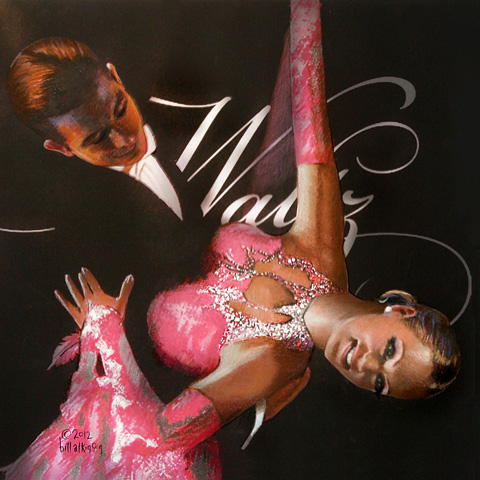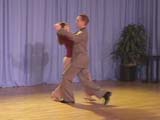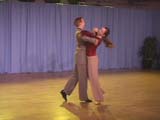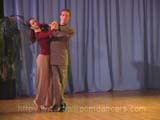When first introduced into the English ballrooms in the early 1800`s, the Waltz was denounced by both church and state for its vulgarity and immorality... this was, after all, the first time society had seen this outrageous dance position, with the man holding the lady so close to his body. But the very thing that brought it such criticism also made it appealing, and the Waltz was here to stay.
Throughout its history, the Waltz has undergone many changes. Even before its introduction into society as a ballroom dance, it was a country folk dance born in the seventeenth century in the suburbs of Austria and Bavaria. By the middle of the eighteenth century, the dance had grown in popularity and spread throughout Europe.
The Waltz was introduced into the United States in the mid-1800`s. The standard Waltz tempo at this time was still very fast and quite demanding to the average dancer, and before long, composers were writing music which was much slower. From this music evolved a style of Waltz called the Boston, with slower turns, and more longer, gliding movements. While the Boston eventually faded away, it did stimulate the development of what we now know as Slow Waltz. Throughout the twentieth century, the English refined the movements and codified the technique into the competitive International style Slow Waltz.
Footwork: Forward walking steps are normally taken with the heel first in contact with the floor, with the toe lowering as the body moves over it. Backwards walks are taken with the toe first, with the heel lowering as the body moves over it. At the same time, the toe of the forward foot is released from the floor as the body moves away. Side steps normally use the toe first.
Rise & Fall Rise & Fall is a defining characteristic of Slow Waltz. Each cycle of rising and lowering typically takes place over 1 measure (3 beats) of Waltz music. The lowest point in the cycle (i.e. the point at which the knees are the most bent) occurs when the foot is placed at the beginning of the first beat in the measure. The highest point in the cycle (i.e. when the body is elevated to its highest on toes) occurs at the beginning of the third beat in the measure.
Contra-Body Movement Typical of the smooth and standard ballroom dances, contra-body movement is used to commence most turning movements.
Sway Sway is defined as the inclination of the body to the left or right, usually accompanying movements to the side. Sway is present in most figures of Slow Waltz.
 Slow Waltz is danced using a normal ballroom-style closed position dance hold. This typically includes the use of body contact, although a more relaxed semi-closed hold is often used in social dance situations, or for learning purposes.
Slow Waltz is danced using a normal ballroom-style closed position dance hold. This typically includes the use of body contact, although a more relaxed semi-closed hold is often used in social dance situations, or for learning purposes.
In closed position the man and lady stand in front of each other, slightly offset to the left. The lady's right hand and man's left hand are joined in an upper-hand clasp at approximately the lady's eye level. The man's right hand is placed on the lady's shoulder blade, with the lady's left arm resting easily on his right. The resulting dance frame should be held sturdy, but relaxed and absent of tension or strain.
For a more detailed study of closed position, see the Glossary of Dance Positions.


 Closed Changes
Closed Changes Natural Turn
Natural Turn Reverse Turn
Reverse Turn Natural Spin Turn
Natural Spin Turn Whisk
Whisk Slow Waltz is danced using a normal ballroom-style closed position dance hold. This typically includes the use of body contact, although a more relaxed semi-closed hold is often used in social dance situations, or for learning purposes.
Slow Waltz is danced using a normal ballroom-style closed position dance hold. This typically includes the use of body contact, although a more relaxed semi-closed hold is often used in social dance situations, or for learning purposes.